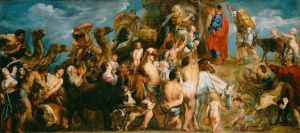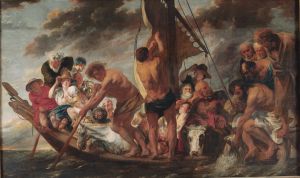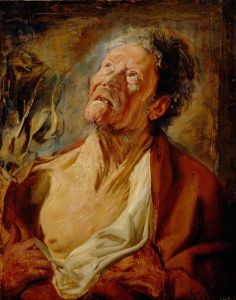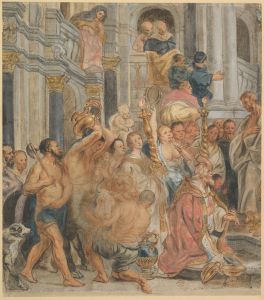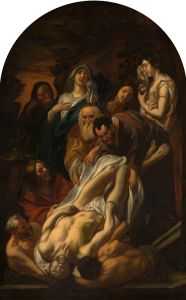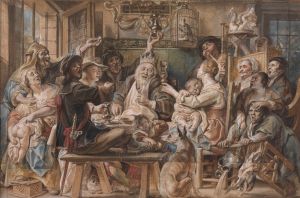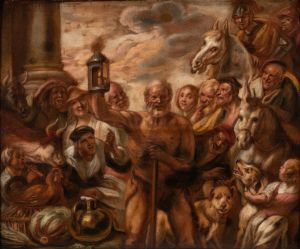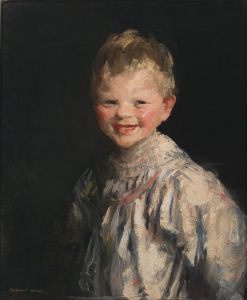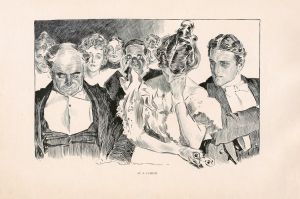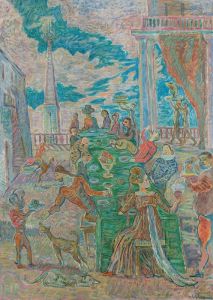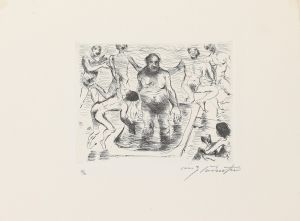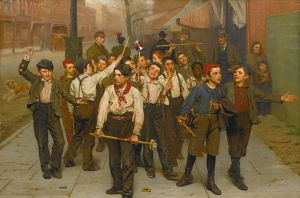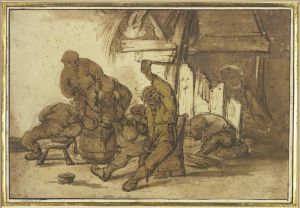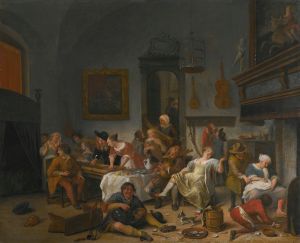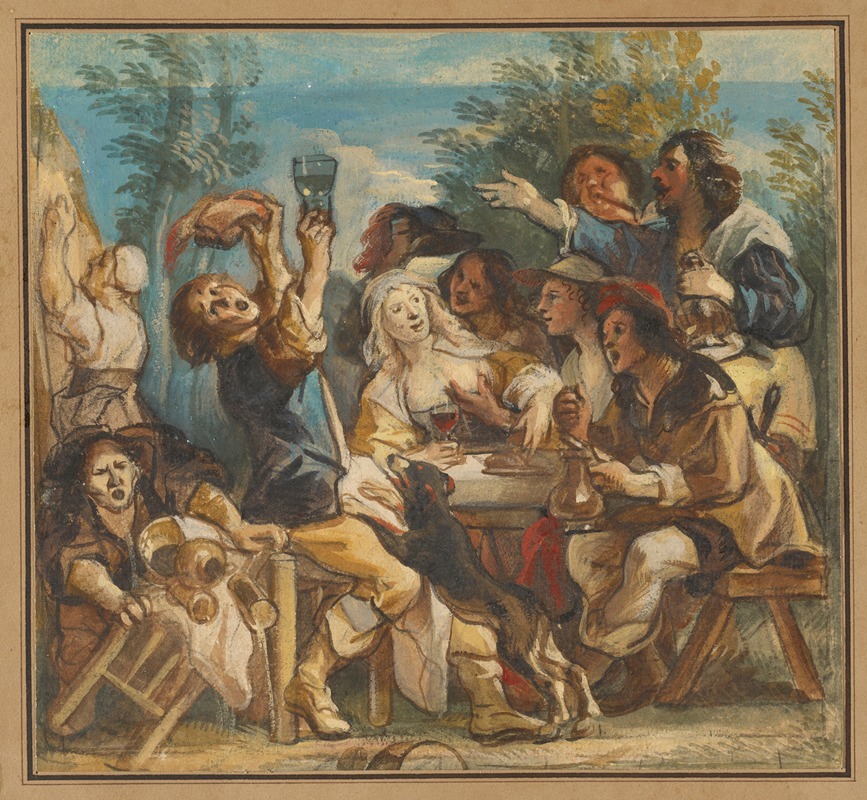
A Merry Company
A hand-painted replica of Jacob Jordaens’s masterpiece A Merry Company, meticulously crafted by professional artists to capture the true essence of the original. Each piece is created with museum-quality canvas and rare mineral pigments, carefully painted by experienced artists with delicate brushstrokes and rich, layered colors to perfectly recreate the texture of the original artwork. Unlike machine-printed reproductions, this hand-painted version brings the painting to life, infused with the artist’s emotions and skill in every stroke. Whether for personal collection or home decoration, it instantly elevates the artistic atmosphere of any space.
Jacob Jordaens, a prominent Flemish Baroque painter, is known for his vibrant and dynamic compositions. One of his notable works is "A Merry Company," a painting that exemplifies his mastery in depicting lively scenes filled with character and emotion. Jordaens was a contemporary of Peter Paul Rubens and Anthony van Dyck, and while he never traveled to Italy, his work was heavily influenced by the Italian Renaissance and the Baroque style that was prevalent in his time.
"A Merry Company" is a genre painting, a category that Jordaens frequently explored. Genre paintings typically depict scenes from everyday life, often with a focus on the lower and middle classes. These works were popular in the 17th century, particularly in the Netherlands and Flanders, as they resonated with the burgeoning middle-class audience who appreciated art that reflected their own lives and experiences.
In "A Merry Company," Jordaens captures a convivial gathering, likely a family or a group of friends, enjoying food, drink, and music. The painting is characterized by its rich color palette and the dynamic arrangement of figures, which create a sense of movement and liveliness. Jordaens was known for his ability to convey the textures of different materials, such as the sheen of satin, the roughness of wool, and the gleam of metal, which adds a tactile quality to the scene.
The figures in the painting are depicted with a sense of realism and individuality. Jordaens often used members of his own family as models, which may explain the personal and intimate feel of the work. The expressions and gestures of the figures are animated and varied, contributing to the overall sense of merriment and celebration. The composition is carefully balanced, with the figures arranged in a way that leads the viewer's eye around the scene, creating a sense of depth and space.
Jordaens' use of light and shadow enhances the three-dimensionality of the figures and the setting. The light source, likely a window or a candle, illuminates the central figures, casting shadows that add to the drama and intensity of the scene. This technique reflects the influence of Caravaggio and the tenebrism that was popular among Baroque artists.
The painting also includes symbolic elements that were common in genre paintings of the time. These symbols often carried moral or allegorical meanings, reflecting the values and concerns of 17th-century society. For example, the inclusion of musical instruments and food might suggest themes of harmony and abundance, while the presence of a dog could symbolize loyalty or fidelity.
"A Merry Company" is a testament to Jordaens' skill as a painter and his ability to capture the spirit of his time. His work remains significant for its contribution to the development of genre painting and its reflection of the cultural and social dynamics of the Baroque period. Today, Jordaens' paintings are held in high esteem and can be found in major museums around the world, where they continue to be appreciated for their vitality and technical brilliance.





